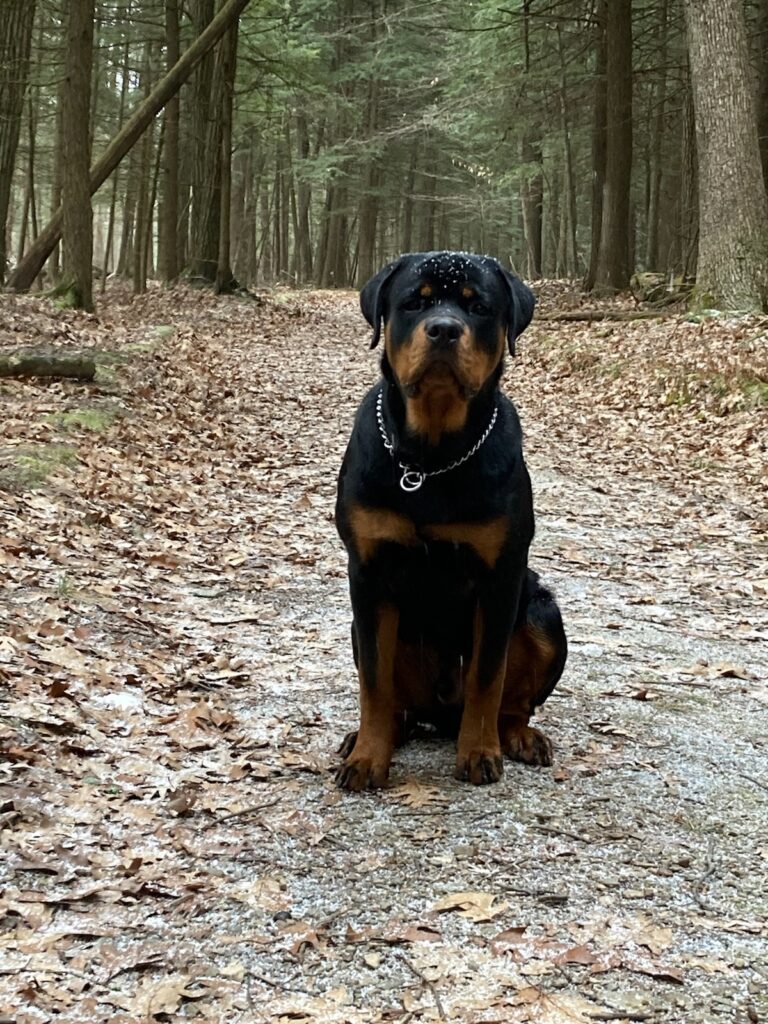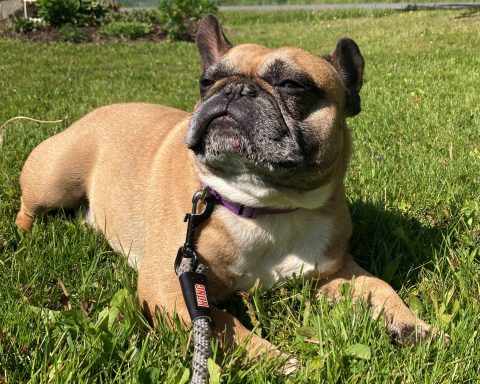Dog Charmer:
Dakota is smart, but the woods distract him
We have a beautiful and smart six-month-old male Rottweiler named Dakota. He is really good with the basics of sit, lay down and stay. We love to go hiking and the goal is to be able to take him off leash. He loves to be out in the woods. How do we get him to be more attentive to us when walking? We need him to come back to us quickly when called and greet other dogs and their owners with manners. He comes now but sometimes we have to go to him and get his attention again. We would like him to respond without us going to him.
Peggy
Dear Peggy,
Not counting experimental breeds that have yet to achieve official status, there are about 360 officially recognized breeds worldwide. According to Stanley Coren, author of The Intelligence of Dogs, the Rottweiler is the 9th most intelligent. (I seriously doubt Coren tested all 360 breeds, very many of which we never even heard of or saw). However, having worked with a “ton” of them, bottom line, Rotties are real smart, and are used as working dogs for all kinds of work.
At six months of age he’s a teenage punk, and the fact that he cooperates with “down” and “stay” is great. My guess is that most of that cooperation takes place indoors, with few distractions. One of your chief goals should be to increase the intensity of the distractions through which Dakota cooperates, starting indoors and graduating to his positive responses outdoors, off leash.
Getting him to come to you when called, the “recall”, is critical. Starting indoors, 10 plus times a day, when he doesn’t expect it, call him with the words, “Dakota come!” The first 4 or 5 times he arrives he gets a treat as soon as he’s sits after arriving. After the first 4 or 5 recalls he gets the treat intermittently. Why intermittently? Because it’s one of the strongest ways to get a conditioned response. The attitude becomes, maybe there’s a treat, maybe not, but I better go check it out. The conditioned “sit” upon arrival is very important as it helps eliminate the jumping and makes for a polite greeting. As soon as you can, eliminate the verbal command to sit and let it become automatic, as people he greets are unlikely to tell him to sit.
Outdoors, off leash, is when it gets “real”! This is the only time Mr. Dakota gets people-food treats, after earning them of course. Just like indoors, call him multiple times, but now he’s rewarded with tiny pieces of chicken (or whatever) upon arrival. At this point the recall is rewarded even if he doesn’t sit upon arrival. Depending on his proclivity to roam or chase chipmunks and deer I might suggest he drag a long piece of leash with the handle cut off or a piece of rope, ON A HARNESS. (No handle so it’s less likely to get snagged on something and if he goes flat out after a deer and the rope gets caught on something you don’t want it attached to his neck!). As he matures and cooperates you can keep shortening the drag line until he doesn’t need it.
It’s also important that Dakota gets well socialized, and accustomed to all kinds of sights and sounds.
Taking a few walks in downtown Oneonta wouldn’t hurt — “been there, done that, seen that, no big deal” is your goal for his attitude.
Another key command for Dakota is “Leave it!” Hearing this he doesn’t chase the deer, greet the dog he sees or eat the dropped slice of pizza on the Oneonta sidewalk. Sorry, “Leave it” is for another column, however, with a very strong recall you will have less need for the “Leave it” command.
Congrats on your new 4-legged significant other and don’t hesitate to stay in touch.
Dog Charmer Tom
Cooperstown author Tom Shelby will answer pet owner questions on dog training. Email your questions to dogsrshelby@msn.com.


